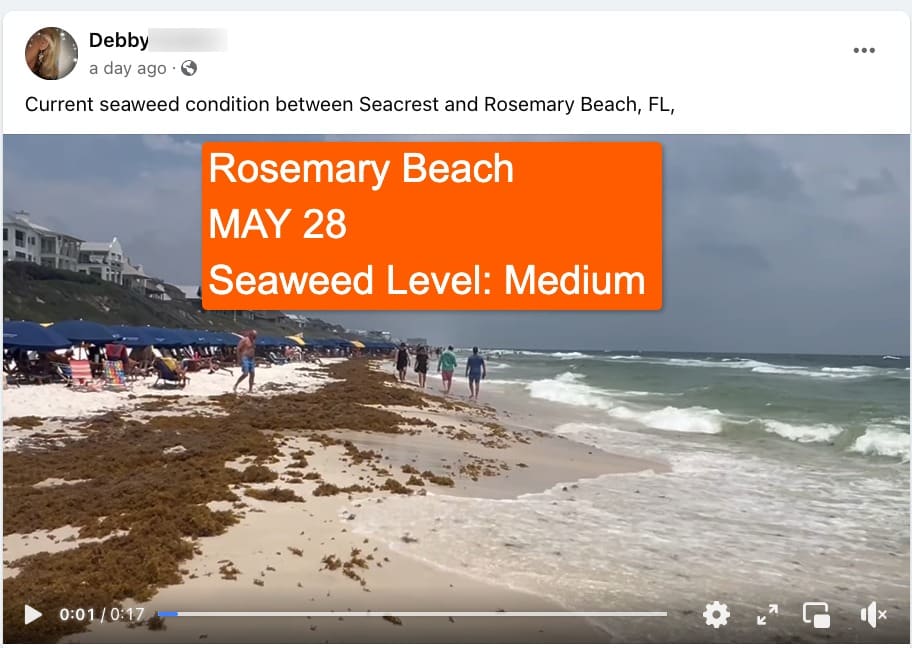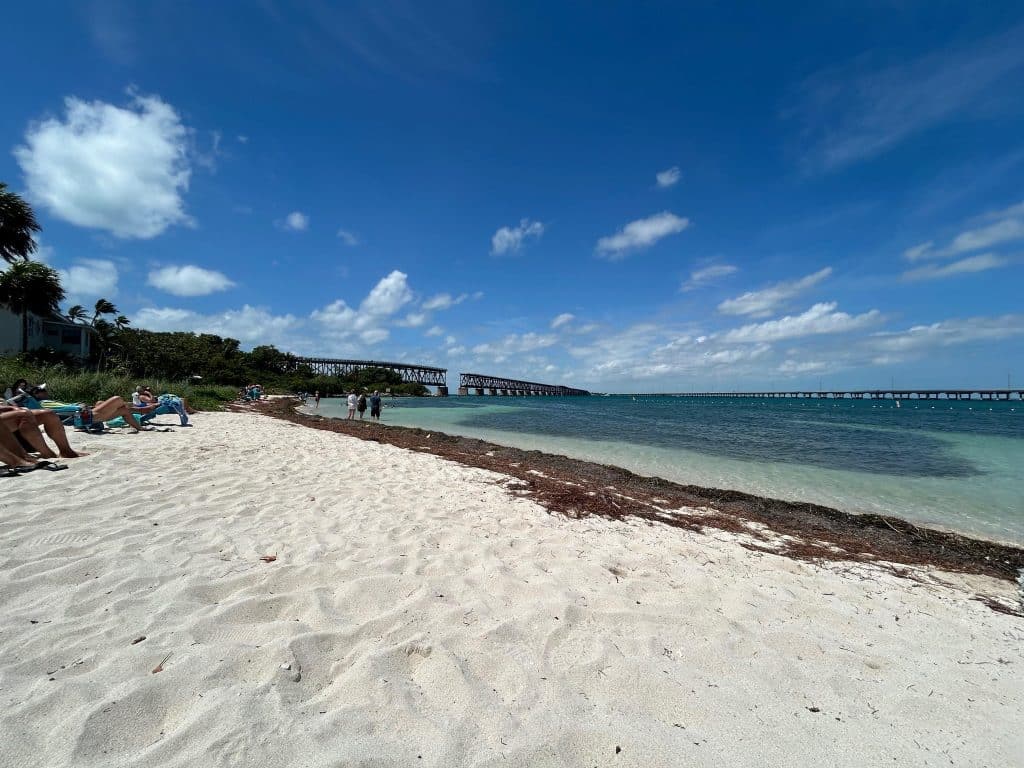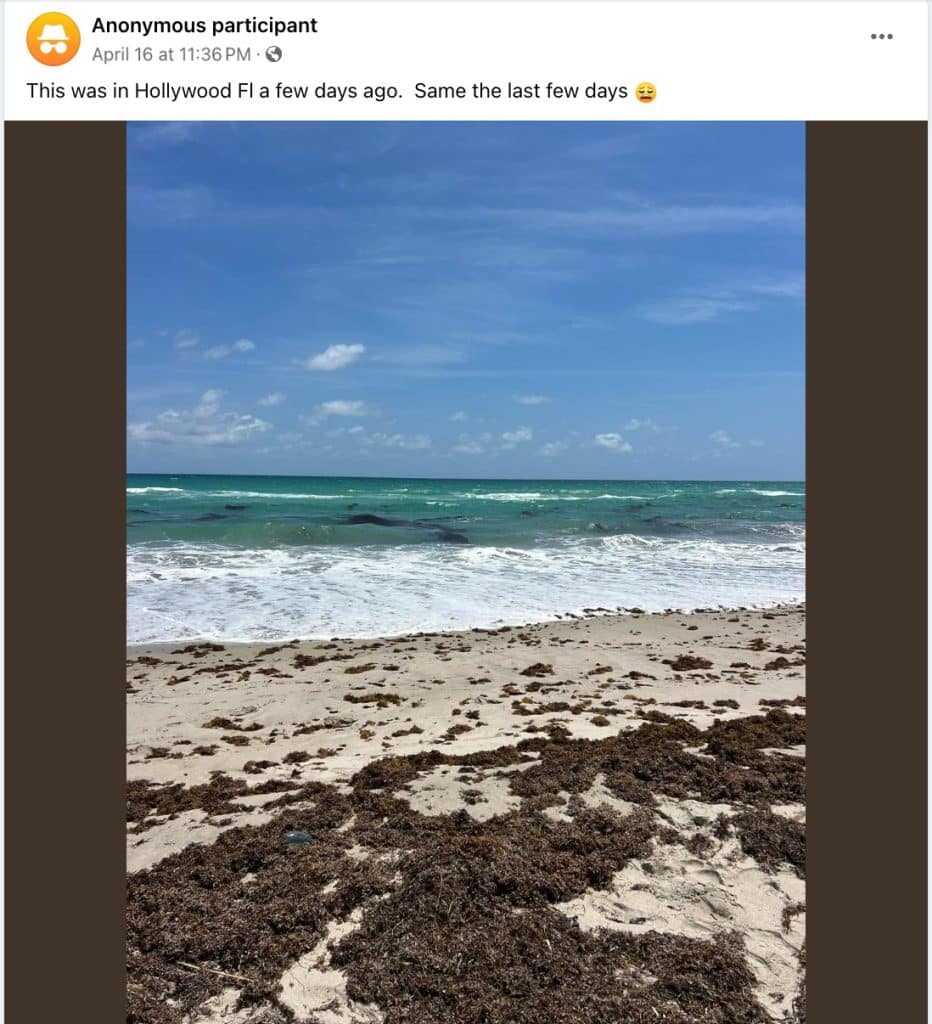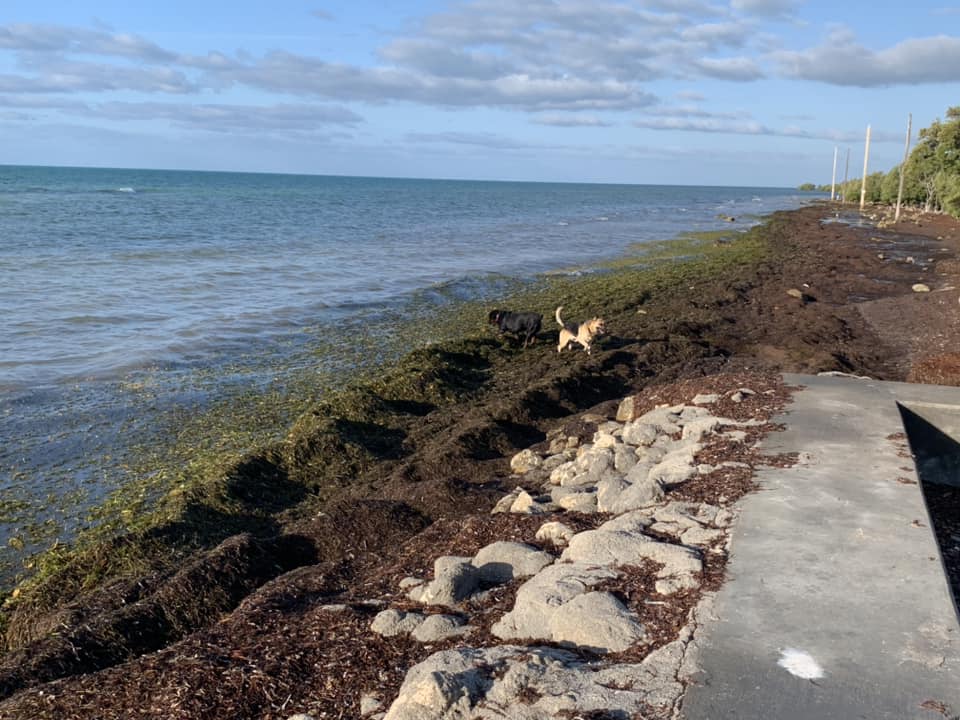Table of Contents
The Florida coast will be covered in seaweed this summer. The Atlantic seaweed known as sargassum will be coming ashore and may be particularly abundant this year.
As for May 16, the situation is not critical in any part of Florida. According to the latest update from scientists at the University of South Florida, Florida will see the peak of sargassum seaweed invasion in late May of this year.
July 4th update: The Sargassum seaweed situation in Florida improved in June 2024. The presence of sargassum on Florida beaches decreased and both coasts remain relatively clean. Only some parts of the Florida Keys and Key West are seeing higher arrivals (medium level).
Naplesnews.com published a water quality map before July 4. The results are based on data from Florida Department of Health and the Florida Fish and Wildlife Conservation Commission. Most beaches in the area are in good condition.
Sargassum seaweed distribution map
Sargassum distribution map in the Atlantic Ocean and Caribbean Sea (JUNE 25, 2024)

Sargassum distribution map in the Atlantic Ocean and Caribbean Sea (MAY 1, 2024)

REMARK: These satellite image forecasts should be considered an estimate only! The movement of Sargassum seaweed is very unpredictable to track as the situation changes daily.
Latest updates on the seaweed situation in Florida:
June 2024: The situation in Sargassum in June was stable with low levels
Based on the daily updates in the Facebook monitoring group, we can summarize June as a great month in terms of sargassum seaweed levels. They remained high along both coasts of Florida. Sargassum mainly appeared in the areas of the Florida Keys and Key West.







May 17 – May 29: Sargassum seaweed rises in Florida over Memorial Weekend
Florida beaches are seeing a noticeable increase in sargassum seaweed. Activity in our FB reporting group skyrocketed over the busy Memorial Weekend with photo updates from all over the Sunshine State.
“I’ve lived here for several years and this is the worst I can remember in terms of quantity. I was there yesterday and the levels have gone up since Mother’s Day, but this time it didn’t smell nearly as bad.” – Sheri P. said on Facebook under Okaloosa Island a seaweed photo report.




Video of Rosemary Beach:
May 5 – May 16: Latest photo reports and updates Sargassum Seaweed Florida Reports FB Group
Sargassum seaweed levels in Florida remain very manageable, but scientists say the seaweed is about to peak.




April 25 – May 4: Latest photo reports from Sargassum Seaweed Florida Reporting FB Group
Seaweed season 2024 is in full swing in Florida and starting to peak! The most affected areas are expected to be Key West and the Florida Keys.




April 25, 2024: Latest photo updates



April 25, 2024: Seaweed forecast in Florida: Invasion will begin in late May this year
Scientists from the University of Florida report this in the Palm Beach Post to predict a potentially massive invasion of sargassum seaweed in May.
The official seaweed season in the Caribbean has already started, but it was very mild until mid-April. Caribbean places such as Cancun, Tulum and Punta Cana are usually hit hard and have only seen increased seaweed supplies in the past two weeks. This delay was most likely caused by lower sea temperatures in the Caribbean this winter.
“Unlike most previous years, total sargassum fell from approximately 9 million tons in February to approximately 6.5 million tons in March,” according to a report from USF’s Optical Oceanography laboratory earlier this month. “The total amount in March was still above 75% of all previous March months, indicating that 2024 could still be a significant sargassum year.” according to scientists.
January 15, 2024: Another one record blob of sargassum was measured in the central Atlantic Ocean
Scientists at the University of South Florida have reported a significant increase in sargassum, a type of seaweed, in the central Atlantic Ocean, near the Caribbean Sea. As of December 2023, the mass of sargassum reached almost 5 million tons, a significant increase from the 1 million tons recorded at the same time in the previous year.
This amount sets a new historical record for the region. Despite a 15% decline in May 2023, which is off from the record high of 22 million tons in 2022, researchers expect 2024 to be another big year for sargassum growth.
Currently, most of this seaweed mass is located approximately 800 kilometers east of the Caribbean Sea, with significant blooms also observed near the Orinoco River in Venezuela, affecting areas such as Trinidad and Tobago and the southern Caribbean Sea.
What causes the seaweed problem?
A 2020 study, with research from the National Oceanic and Atmospheric Administration (NOAA), linked the increase in sargassum in the tropical Atlantic Ocean to a shift in the North Atlantic Oscillation (NAO) around 2009-2010.
This change led to stronger westerly and southerly winds, which spread sargassum from the Sargasso Sea to the tropical Atlantic Ocean, where it received more sunlight and nutrients from ocean upwelling.
The longevity of this increased sargassum presence is uncertain, with NOAA’s Rick Lumpkin noting the possibility of a similar event occurring in the past, followed by a decline of the Sargassum belt after decades.
What could be done? These are possible alternative uses for sargassum headed to Florida, according to a new startup
The surge of sargassum seaweed in recent times has prompted companies to explore new methods to eliminate it, and its potential applications are already numerous.
Scientists and entrepreneurs aim to turn it into syrup, bricks and possibly even jet fuel. Carbonwave, an organization based in Boston and Puerto Rico, uses it as an ingredient in fertilizers, cosmetics and even synthetic leather.

